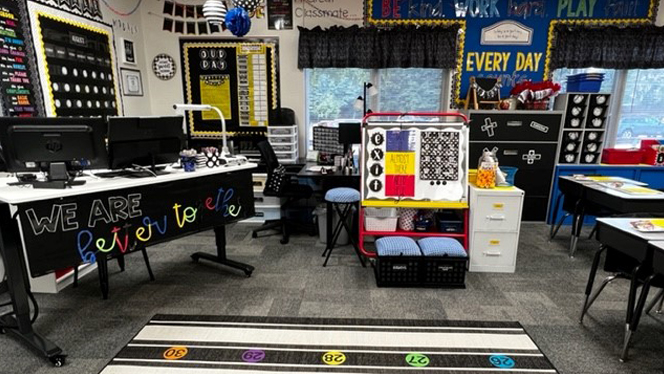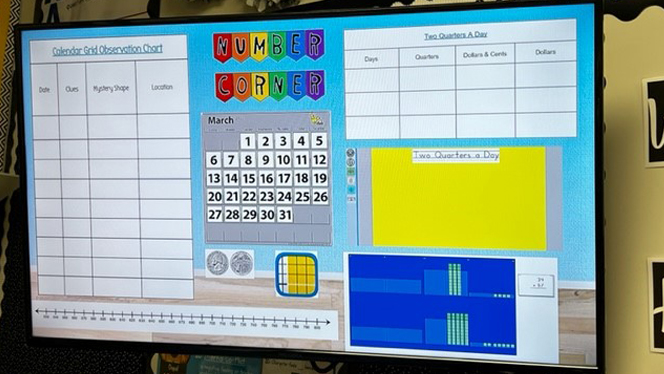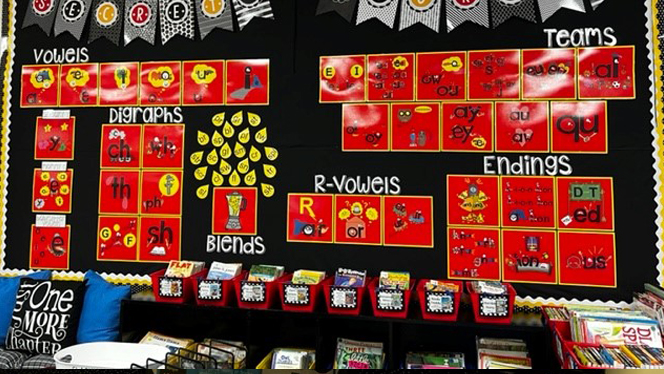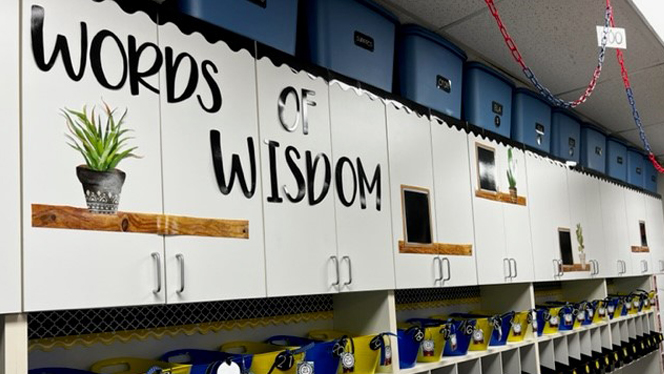Vanguard Charter Academy Second Grade Teacher Tami DeKam reflects on the positives and potential changes. This summer, she is focused on building relationships, which means changing the layout from kids facing forward and being socially distanced to small- and large-group areas.

From the walls to floors, space is precious, and for good reason; this is where scholars will learn for hundreds of hours each year.
“There's a place for everything,” said DeKam, who has taught for 25 years, 15 at Vanguard.
Bulletin boards make the most of wall space, so DeKam said they should focus on the day’s activities as opposed to something cute you might find on Pinterest. For her, that includes songs or games, exit tickets, the beginning, middle, and end of a lesson, and rules and consequences.

Excel Charter Academy Fifth Grade Math teacher Natalie Rush creates bulletin boards with broad topics such as Moral Focus. She also enjoys when students contribute by sharing math strategies each day to build into a bulletin board. She recommends fabric instead of bulletin board paper so they can be used each year.
Maximizing space can lead to overkill, though. Rush remembers that in high school, one of her teachers covered every inch of the walls with materials, making the room cluttered.

“You lost focus, and sometimes students need to stare at a blank wall to be able to hear what the lesson is,” she said. “Sometimes, simpler is better.”
Desk placement determines a classroom’s flow, including what direction they face. Clusters of desks are better for a class that does a lot of group activity and eliminates roadblocks for a teacher.
“You don't want any spots that you are not able to move freely throughout the classroom because we don't want our students to want to hide,” Rush said. “We want them to be able to succeed. Sometimes, you have to break them out of that comfort zone.”

DeKam said choosing how much work to put into a classroom depends on the individual. What works one year for one group might not be best next year, including for the teacher.
“Personally, I need change every year to make it an exciting new adventure for me, too,” she said. “I’ve stayed in the same grade, but I make lots of changes every year to my instruction and my classroom to keep it fresh and current.”
About Vanguard Charter Academy
Vanguard Charter Academy is a tuition-free, public charter school in Wyoming, Michigan, serving students in Young 5s through eighth grade. It is part of the National Heritage Academies (NHA®) network, which includes over 100 tuition-free, public charter schools serving more than 65,000 students in kindergarten through 12th grade across nine states. For more information, visit nhaschools.com.
Visit Vanguard Charter Academy's blog to read more stories like this.
